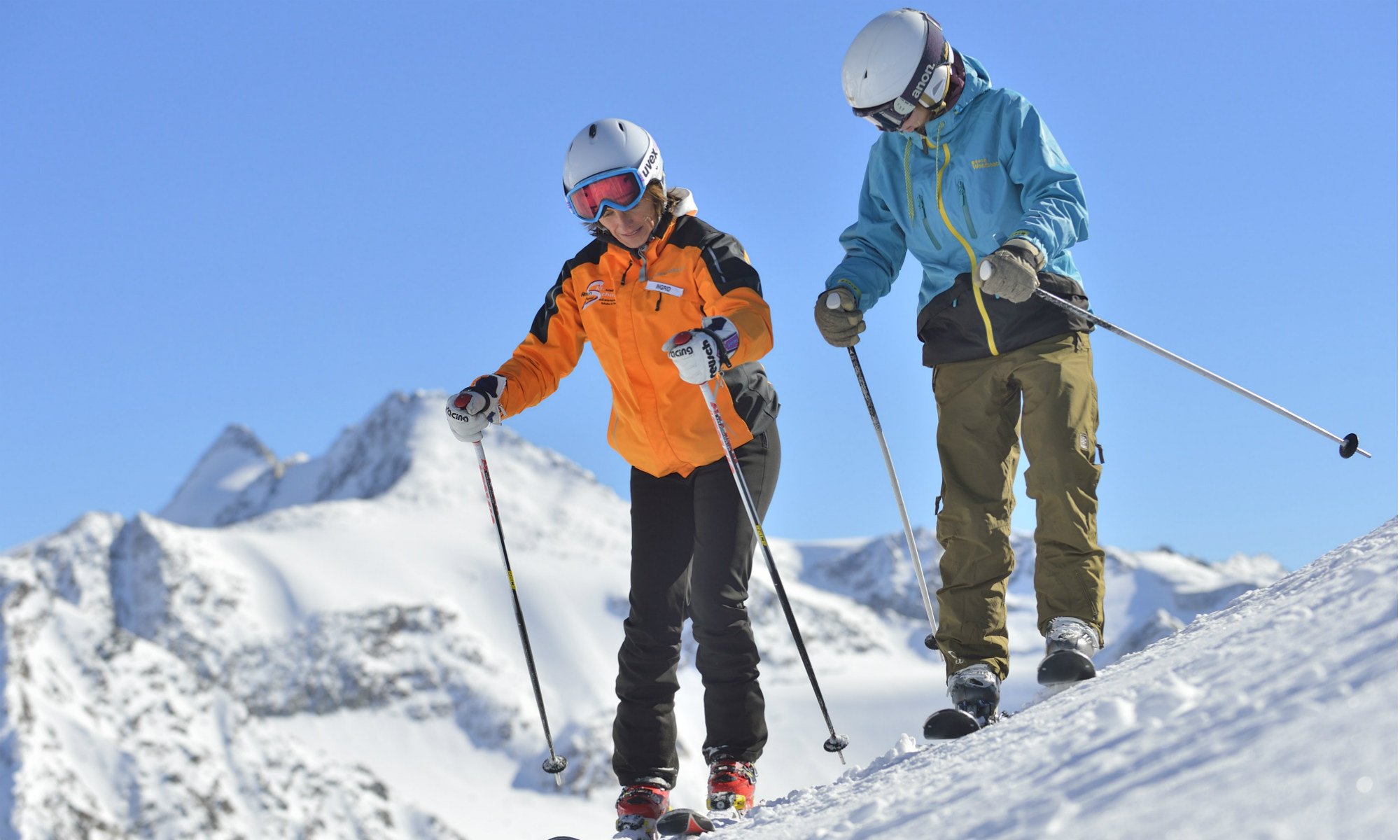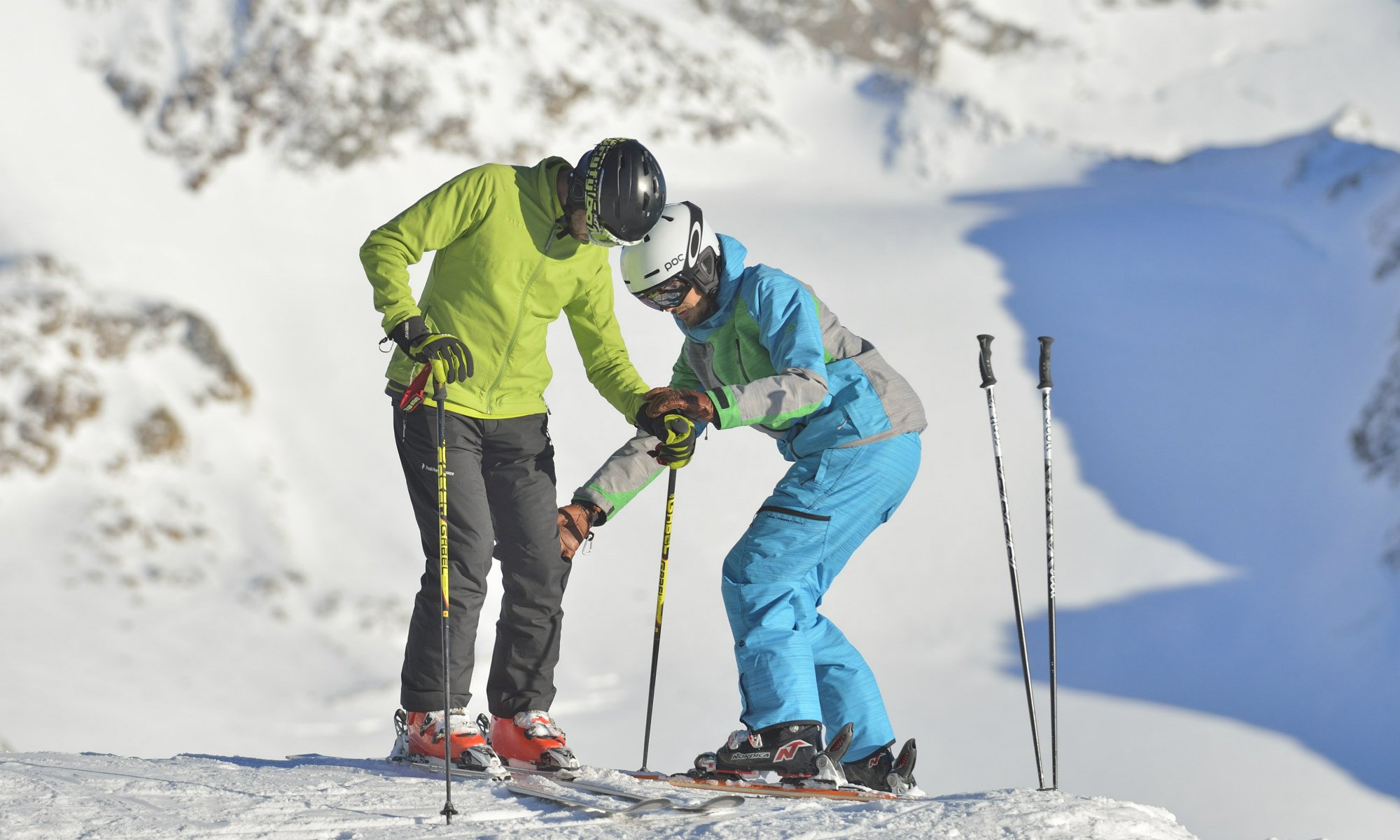Always remember the golden rule of skiing: keep the right body posture! This is one of the main things to keep in mind when enjoying snowy slopes. Your speed, the direction in which you are going and the snow conditions on the slopes constantly change while skiing. Therefore, having the right body posture is crucial for adapting your technique quickly but also safely to the current conditions. Even professional skiers are constantly working on improving their body posture, in the hope of beating their fastest time, over and over again.
Do you want to ski like the pros? Then keep reading because, in this article, the experts at checkyeti will explain the best skiing techniques, what you should keep in mind and how to avoid the most common mistakes.
- The perfect Body Posture
- Adopting the right Body Posture for Carving
- Short and sweet Short Turns
- Avoiding the most common Mistakes
The perfect Body Posture

The right body posture ensures freedom of movement and the flexibility needed for correct and smooth turns. Having the right position allows you to quickly adapt your skiing technique to the terrain and the conditions, and to change your body position easily, for example when changing direction or speed.
The basic rules of alpine skiing
- The skis are hip-width apart and in a parallel position
- Ankles, knees, and hips are bent equally
- The body weight is transferred onto the downhill ski
- The upper body is leaning slightly towards the valley
- The arms are bent and positioned at the sides of the body
- The body should not be stiff but taut and the position should be comfortable and easy to hold
checkyeti Tip 💡 In order to better visualize the right posture, it may be helpful to picture axes through the ankle, knee and hip joints. These axes should be parallel to each other.
Some ski schools offer video analysis during the ski lesson. This way you can see for yourself and correct your posture. The Altitude Grindelwald & Wengen ski school, for example, offers this service during private ski lessons.
Adopting the right Body Posture for Carving

Carving combines the thrill of skiing downhill at high speeds with smooth, long turns. The right technique guarantees not only fun but also safety on the slopes.
The difference to classic parallel turns is that a carving turn requires a more inclined body position. Also, the skis do not slide but instead carry the skier, as if on tracks, across the slope. It is very important to push the edges of the skis deep into the snow. The traces left behind will indicate whether you carved well or whether your skis slid downhill. The upper body compensates for the downward force on the knees and hips during the uphill movement, so that balance is maintained.
The Arlberg area has great pistes for practicing carving, and the ski schools in Arlberg offer group and private lessons that can help you perfect your carving technique:
Short and sweet Short Turns

On narrow or busy pistes, a well-practiced short turns technique is definitely an advantage. Short turns have a smaller radius and can be done consecutively at a faster interval. As the turns are particularly short, it is important that the legs, especially the ankles and knees, initiate the movement. The upper body remains steady and faces the valley at all times, whilst the legs do the work and make the turns. When skiing short turns, the skis should leave the fall line as quickly as possible.
To best improve your skiing posture, you might consider booking a couple of private ski lessons at the beginning of your holiday and then practising by yourself on the following days. Zermatt is the perfect place for those who already have some skiing experience and want to challenge themselves.
For more information about the Zermatt resort, we recommend you read our article: Learn to ski in Zermatt: What to expect if you choose Zermatt for your next ski holiday.
Avoiding the most common Mistakes

Here, the team at checkyeti explains the most common mistakes made by skiers and how to avoid them:
Legs
For skiing, the correct position of the lower body is essential, with the ankles, knees and hip joints being particularly important. One common mistake is that the joints are held too stiffly. In this case, they cannot cushion bumps and skiers lose their balance. When the joints are bent and flexible, they can quickly react to irregularities on the slopes.
The legs should always be hip-width apart and the skis parallel to each other. Skiing becomes difficult if the stance is too narrow or too wide. If the legs are too close to each other, keeping the balance and letting the skis glide becomes difficult. On the other hand, if the feet are too wide apart, it is harder to manoeuvre the skis.
The upper Body & Head
A correct upper body posture is just as important as having the lower body in the right position. Naturally, there are mistakes that happen but can be avoided. For example, when the upper body and the head lean too much towards the inside of the turn. The skier loses pressure on the outer ski and consequently the control while steering. Also, turns should not be forced with a rotation of the upper body, but rather initiated by the legs. The result of both mistakes is that the body weight is shifted towards the inner ski and full control of the skis is lost during turns.
In the best case, the upper body is steady and upright. The upper body and head lean towards the valley and over the downhill ski in order to compensate the movement of the knees and hips towards the hill.
A good way to practice this is to hold the poles together in front of the body and to keep them parallel to the slope while skiing. This creates tension in the upper body. It is important that the arms are kept steady, the whole upper body moves towards the valley and that the upper body does not rotate. This can be achieved by pressing the hands into the hips. The exercise continues by keeping the upper body steady and starting the movement with the legs only.
Also, not to be forgotten is the correct arm position. Sometimes skiers only focus on the arm that is placing the pole, and the other arm is often neglected. However, both arms need to be by the side, slightly to the front of the body with the poles in the correct position, their ends facing backwards.
Bodyweight Transfer
If bodyweight transfer is not carried out correctly, precise navigation is not possible. One mistake that can often be seen on the slopes is that skiers lean back too far, causing the pressure on the outer skis to be reduced and the skier losing control. This may happen because of inexperience or due to fear of either the slope or the speed.
Can you feel your heels all the time, or do you have a burning sensation in your thighs? Burning thighs are a sign of incorrect posture, so to avoid this mistake, lean to the front and push your shins against the ski boots. The feeling might be unusual at first, but the position helps enable smoother descents. One exercise to counteract bad posture is to cross your arms or to keep the poles together in front of the body, to force the forward movement.
Reached within just over an hour’s drive from Geneva airport, the 150km of slopes at Chamonix-Mont-Blanc are for working on and fine-tuning body posture:
No doubt, winter is my favourite season. It doesn’t matter whether I’m on skis or my snowboard – as soon as I can race down the slopes covered in snow, I’m in my element.
